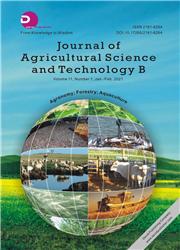Intermodal Transport of Ethanol in Brazil: A Simulation Using Partial Equilibrium
引用次数: 0
Abstract
: The search for renewable energy has put ethanol on another level, making Brazil the second largest producer in the world. The aim of this study was to analyze ethanol transportation alternatives in the face of the current logistics in Brazil. It was proposed a partial equilibrium model analyzing three scenarios: the first concerned a base scenario (scenario 1), the second estimated a 15% decrease in railroad freight (scenario 2), and the third included new national pipeline projects (scenario 3). Scenario 3 showed the highest trading volumes with a 0.20% increase compared with the base scenario, indicating transport systems that prioritize multimodality. It was also highlighted that the multimodality assumptions of scenarios 2 and 3 resulted in competitiveness gains in the international market, because all the routes destined for foreign markets are multimodal.巴西乙醇的多式联运:使用部分平衡的模拟
当前位置对可再生能源的探索将乙醇推上了另一个高度,使巴西成为世界第二大乙醇生产国。本研究的目的是分析乙醇运输的替代品,面对目前的物流在巴西。提出了一个局部均衡模型,分析了三种情景:第一个涉及基本情景(情景1),第二个估计铁路货运减少15%(情景2),第三个包括新的国家管道项目(情景3)。与基本情景相比,情景3显示了最高的交易量,增加了0.20%,表明运输系统优先考虑多式联运。还强调指出,设想2和3的多模式假设在国际市场上提高了竞争力,因为运往国外市场的所有路线都是多模式的。
本文章由计算机程序翻译,如有差异,请以英文原文为准。
求助全文
约1分钟内获得全文
求助全文

 求助内容:
求助内容: 应助结果提醒方式:
应助结果提醒方式:


